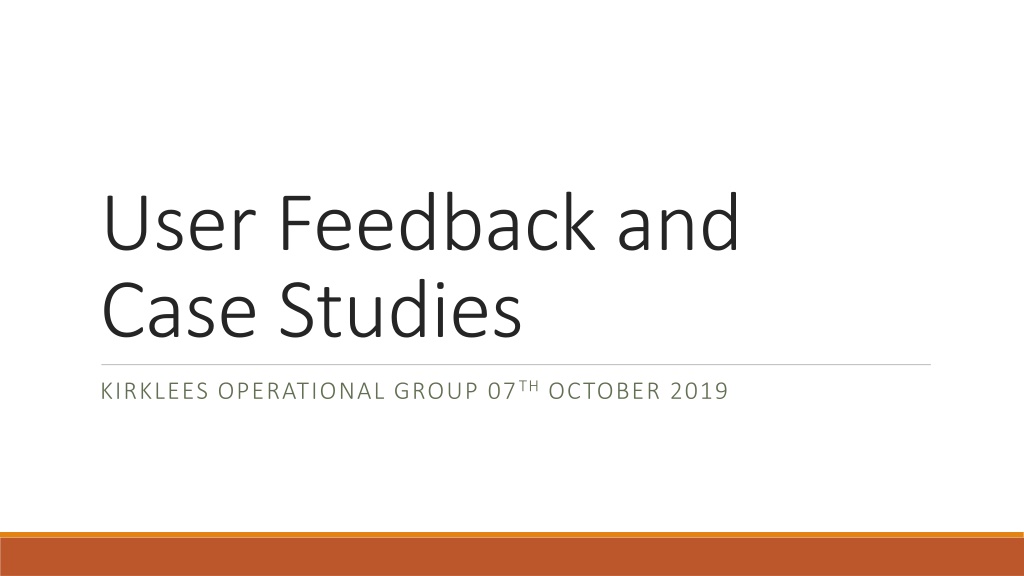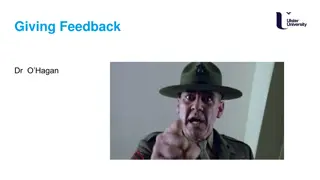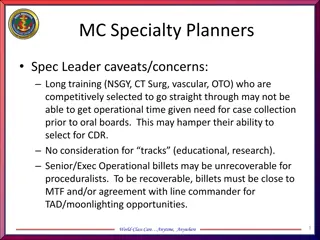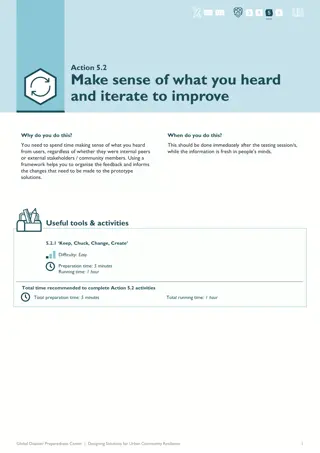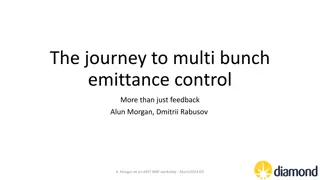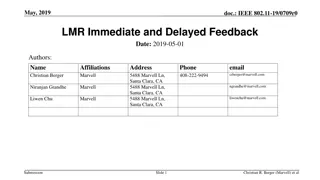User Feedback and Case Studies from Kirklees Operational Group - October 2019
The user feedback and case studies from Kirklees Operational Group in October 2019 highlight feedback statistics and real-life case studies of individuals experiencing mental health challenges. The feedback shows positive responses on support workers' effectiveness and recommendations to family and friends. Case Study 1 follows a male client with Asperger's and paranoid delusions, leading to intervention by mental health practitioners and eventual admission to an acute inpatient ward. Case Study 2 involves a female client transitioning within custody systems. These detailed cases shed light on the challenges and care provided by Liaison and Diversion services in Kirklees.
Download Presentation

Please find below an Image/Link to download the presentation.
The content on the website is provided AS IS for your information and personal use only. It may not be sold, licensed, or shared on other websites without obtaining consent from the author. Download presentation by click this link. If you encounter any issues during the download, it is possible that the publisher has removed the file from their server.
E N D
Presentation Transcript
User Feedback and Case Studies KIRKLEES OPERATIONAL GROUP 07THOCTOBER 2019
User Feedback Overview Total User Feedback: 62 completed feedback forms 45 or (82%) responded always to the question My support worker listened to me and made me feel like my opinions were important. 46 or (84%) responded completely agree to the question- If I had family or friends in the same situation I would recommend Liaison and Diversion to them.
Case Study 1 Case Study 1 Male A, Kirklees Male A, Kirklees Background to case Client A had presented himself at the police station to report his neighbour for being involved in organised crime and drugs supply. He appeared paranoid and anxious and was wearing a stab proof vest whilst carrying a police issue baton. As a result of this Client A was arrested for possession of an offensive weapon. Client A has a diagnosis of Asperger's and historic depression, and was expressing a number of paranoid delusions such as: that his neighbour had arranged for people to follow him, the police had placed covert listening devices in his home, and that his neighbour was flying drones in front of his house and spiking his tea with illicit drugs. Client A s mental state appeared to deteriorate further as he sent emails and text messages to his allocated support worker stating his neighbour was leaking poisonous gases into his property During a phone call made to carry out a welfare check, Client A informed the author that he had poured petrol around his house to see if it interacted with the poisonous gases he believed were being released into his house.
Case Study 1 Case Study 1 Male A, Kirklees Male A, Kirklees Action taken Work was carried out by L&D mental health practitioner. A was initially hard to engage with due to his paranoid ideations however after perseverance and actively listening to Client A, a trusting relationship began to develop. L&D practitioner referred client A to the forensic outreach liaison service (FOLS) due to his diagnosis of Asperger's and being involved with the criminal justice service. However, once it became apparent that Client A s mental state had deteriorated further and he presented a risk to himself and others, the L&D Mental Health Nurse liaised with the Kirklees AMHP Team and a Mental Health Act assessment was requested. Due to the risk posed, L&D worker liaised with the police liaison practitioner within Huddersfield police station control room and suggested it may be necessary for Client A to be detained by the police and that a section 136 would be beneficial in this instance. Client A was detained on a section 135 due to the level of risk it was perceived that a 136 wouldn t be appropriate in this instance. He was then assessed under the mental health act and deemed that he required detaining under section 2 of the mental health act. Client A was admitted to an acute inpatient ward where he could receive treatment for his presenting mental health problems and support him to feel safe in his surroundings.
Case Study 2 Case Study 2 Female Background to case Female A A, Kirklees , Kirklees A came to L&D through custody. A was on the custody systems as C (male) but expressed her wish to be identified as A as she was wanting to transition. A really struggled in her cell and was feeling suicidal. She was diagnosed depression and reported constant thoughts of suicide on a daily basis. During a home visit to discuss and formulate a court report, A disclosed lots of historical trauma. During her childhood A was C male. C was sexually abused by his older brother from aged 7-14yrs which was reportedly witnessed by mum who did not act on this. C reported it at 14yrs but no charges were brought. C went to live in foster care and went through a very unsettled period. C reached out to family to have some form of familiar connection but this then lead to being groomed from age 15yrs 18yrs by mum s partner. A spoke about having to engage in criminal activity & receiving many custodial sentences. A recalled always wanting to transition to a female and came out at 18 years old and sees C as the bad person in her
Case Study 2 Case Study 2 Female A, Kirklees Female A, Kirklees Action taken A had several previous offences relating to cars and as such A was charged to Bradford court. A referred to driving cars as her safe space where nothing could harm her. Subsequently, a court report was completed and sent to Bradford Court that was picked up by L&D court practitioner Court was a long process - increasing A s anxiety. It was adjourned twice, one of which was for probation to meet with A and complete their report also. A was advised to expect a custodial due to being deemed to be high risk of offending and medium risk of harm. L&D practitioner supported A through this process. A was sentenced to 12 months community order, 30 RAR days, Curfew 7pm - 7am for 8 weeks, 120 Hours UPW. L&D court practitioner at Bradford was advised this sentence was given as a direct alternative to custody following the report that was submitted Plan now is to support A to GP to help with transition process
Case Study 2 Case Study 2 Female A, Kirklees Female A, Kirklees Feedback My support worker gave me a lot of advice and listened to what I had to say. She always answered my calls and kept me up to date with what was going on. My worker had some visits with me at my house and other points in the community, and I think doing both made it much easier with what was happening at home. L&D were very helpful and helped me a lot. I believe the service I got was outstanding and would definitely recommend. It has felt very good having support around and A (referring to self) has been very positive since meeting L&D. Thank you!
